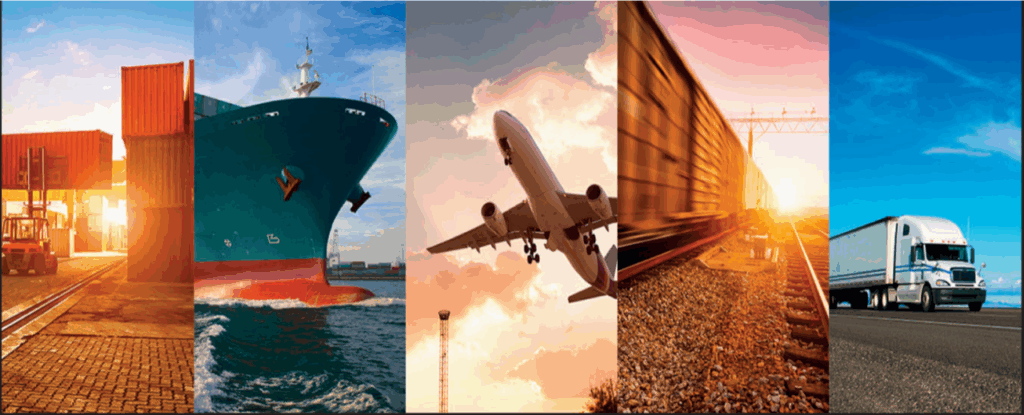As international trade expands, companies are constantly seeking shipping methods that strike a balance between speed, cost, and reliability. One solution gaining global attention is freight rail transportation, which offers a powerful alternative to sea and air freight. This mode of transport connects Asia and Europe through fast, eco-friendly, and cost-effective rail networks that support the growing demand for efficient international logistics.
1. What Is Freight Rail Transportation?
Freight rail transportation refers to the shipment of goods using trains across long distances. It is a preferred mode of transport for many logistics companies due to its ability to handle large volumes, maintain stable schedules, and integrate seamlessly with road transport for first-mile and last-mile delivery.
This service plays a crucial role in connecting production centers in inland China with consumer markets across Europe via the China-Europe Railway Express, forming a vital part of the Belt and Road Initiative.
2. Key Advantages of Freight Rail Transportation
✅ Faster Than Sea Freight
Rail cuts transit time in half compared to traditional sea freight — typically 14–18 days door-to-door.
✅ Cheaper Than Air Freight
Rail offers substantial cost savings over air transport, especially for medium-priority cargo.
✅ Reliable Scheduling
Trains operate on fixed schedules and are less affected by weather or port congestion.
✅ Eco-Friendly Option
Rail emits up to 90% less CO₂ than air freight and significantly less than trucking, supporting green logistics goals.
✅ Ideal for Inland Destinations
Rail can reach locations far from major seaports, providing greater access to landlocked regions.
3. Rail Transit Times & Service Terms (Simplified)
| Route | Transit Time | Departures | Container Type |
|---|---|---|---|
| Xi’an → Germany | 14–16 days | 3–5/week | 40ft HQ, standard |
| Yiwu → Spain | 17–19 days | Weekly | 20ft & 40ft dry |
| Chongqing → Moscow | 10–12 days | 4/week | Dry or refrigerated |
| Zhengzhou → Poland | 15–17 days | 2–3/week | General cargo |
- All services include tracking and customs support
- Optional: insurance, warehousing, door delivery
- Max cargo weight per container: ~28 tons

4. Freight Rail vs. Other Shipping Modes

5. When to Choose Freight Rail Transportation
Consider freight rail when:
- Your goods need faster delivery than ocean freight allows
- The shipment is not urgent enough for air freight
- You’re shipping from inland China to inland Europe
- You want a more sustainable shipping solution
- You need predictable delivery without high air costs
Typical products moved by rail: electronics, auto parts, textiles, appliances, and machinery.
6. Key Terms in Rail Freight Logistics
- EXW (Ex Works): Buyer handles pickup and shipping.
- CIF (Cost, Insurance, Freight): Seller handles cost, insurance, and main transport.
- DAP (Delivered at Place): Seller delivers to buyer’s location, without import duties.
- FCA (Free Carrier): Seller hands over goods at a named place.
Choosing the right Incoterm defines who handles what — and avoids surprise costs.
7. Tips for Efficient Rail Shipping
- Book early — slots fill quickly due to limited weekly departures.
- Use quality packaging and proper palletizing
- Opt for cargo insurance for high-value items.
- Prepare customs documents in advance to avoid border delays.
- Plan last-mile delivery if you’re far from a rail terminal.
Request a Quote
Need a tailored solution for your shipping from China?
Let TJ China Freight Forwarder assist you with reliable, cost-effective service.
FAQ:
Q1.Is freight rail transportation available year-round?
Yes. It operates 12 months a year, although minor delays may occur during holidays or harsh weather.
Q2.Can I track my shipment in real time?
Most freight rail services offer GPS tracking so you can monitor your cargo at every stage.
Q3.What goods aren’t allowed on rail?
Hazardous items, explosives, and some chemicals may be restricted. Check with your logistics provider.
Q4.Do I need to manage customs clearance myself?
No. Most providers offer full customs brokerage services at origin and destination.
Q5.Is there a minimum cargo size for rail?
Both FCL (Full Container Load) and LCL (Less than Container Load) options are available, making rail viable for small and large shipments.
